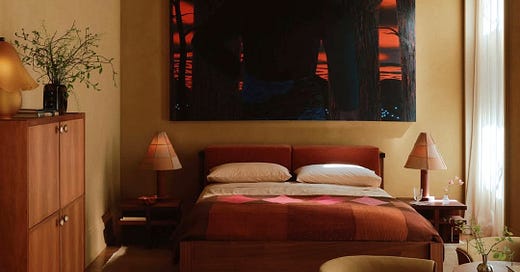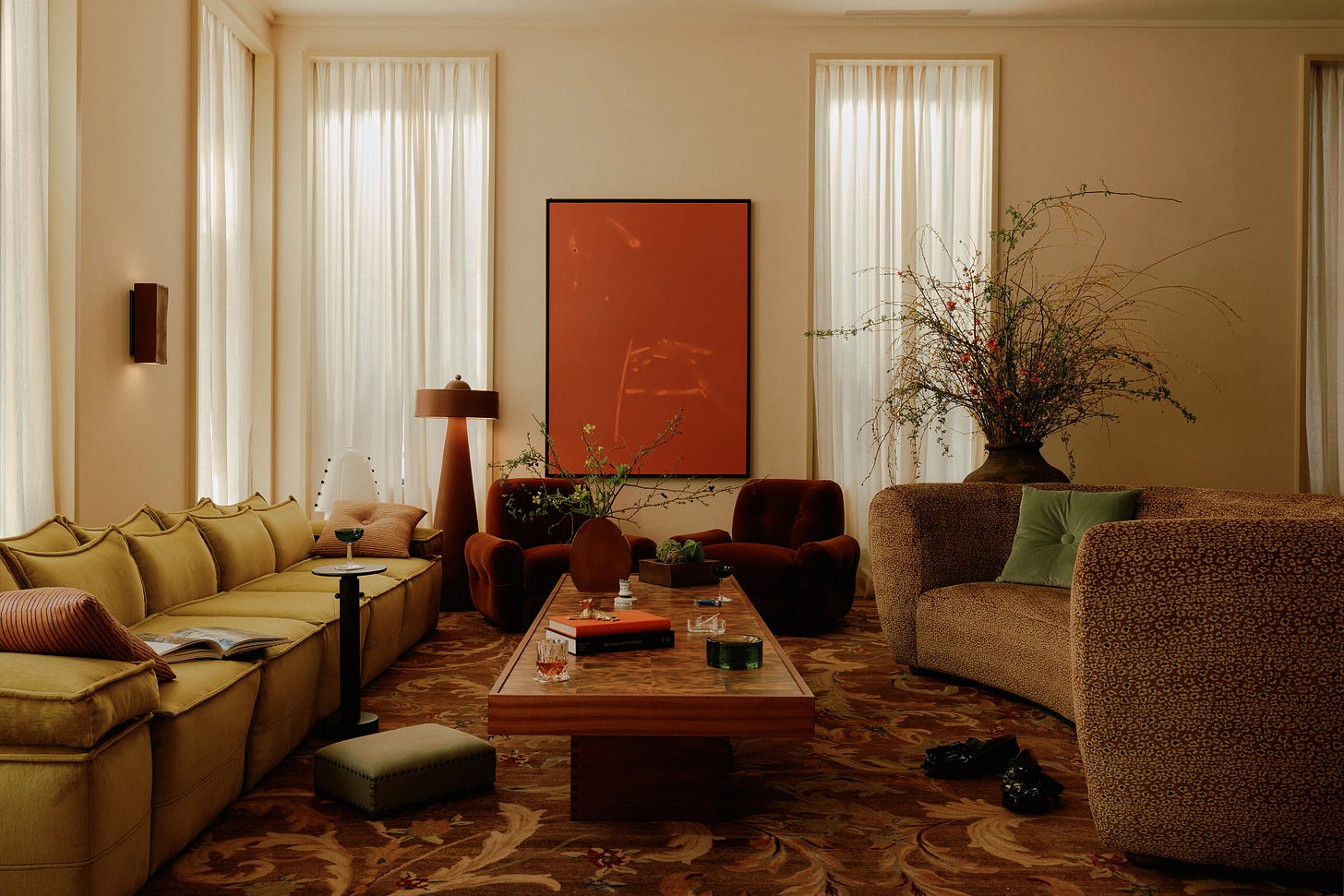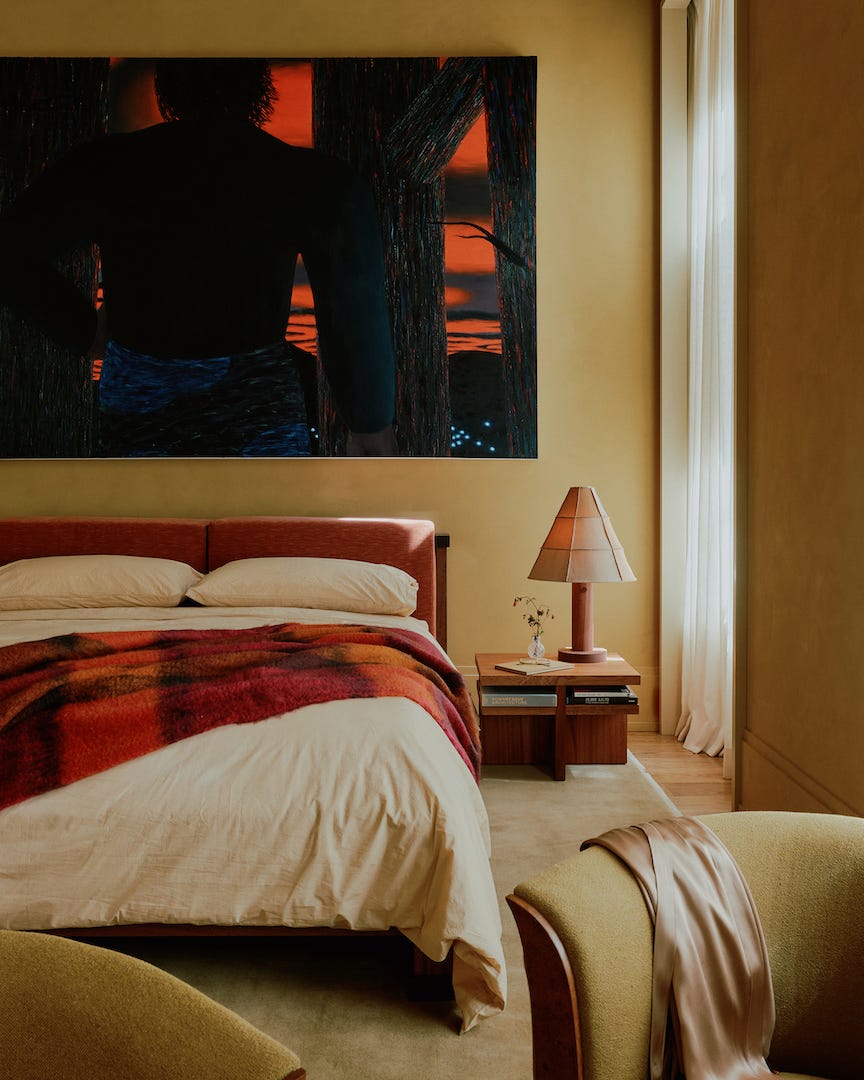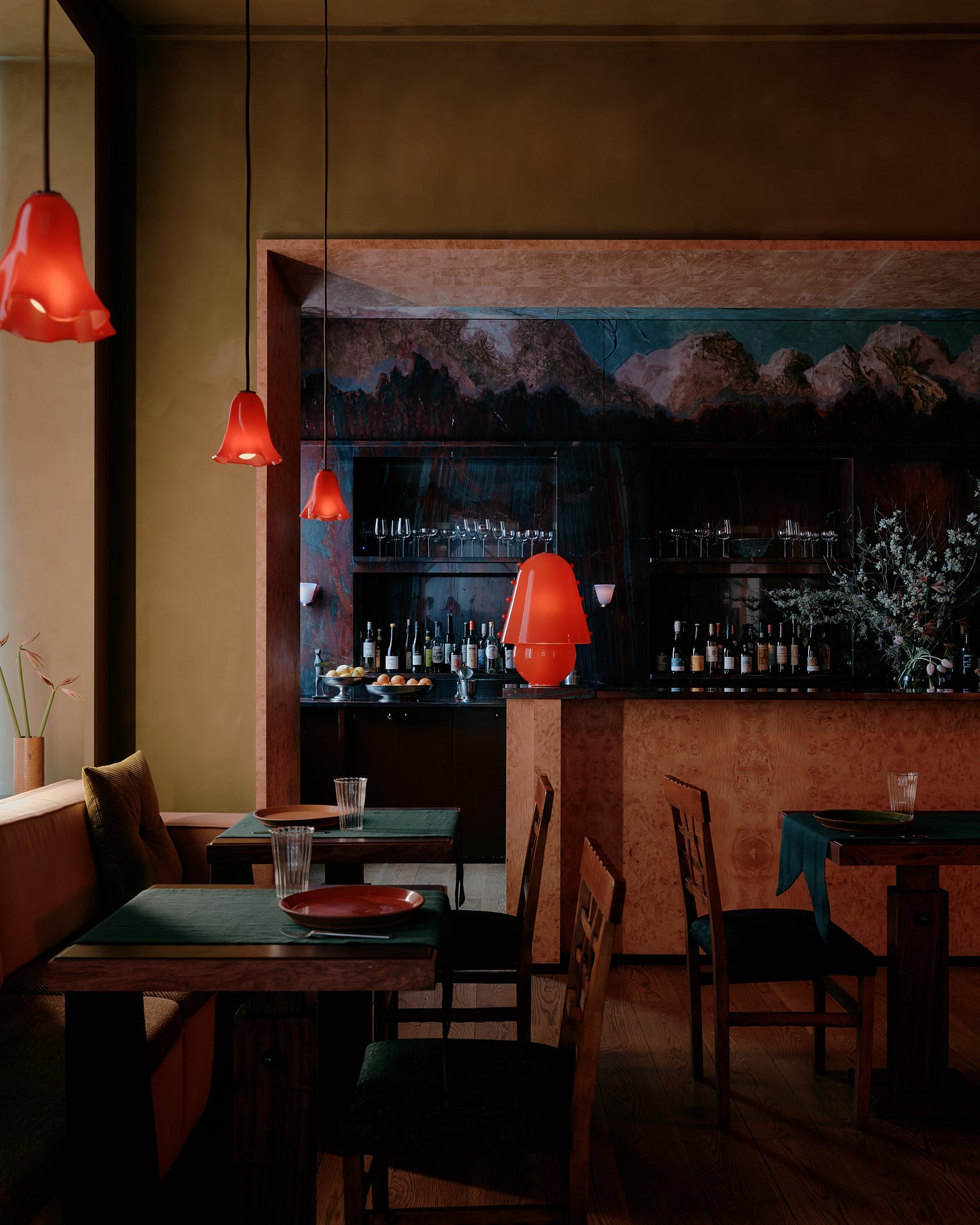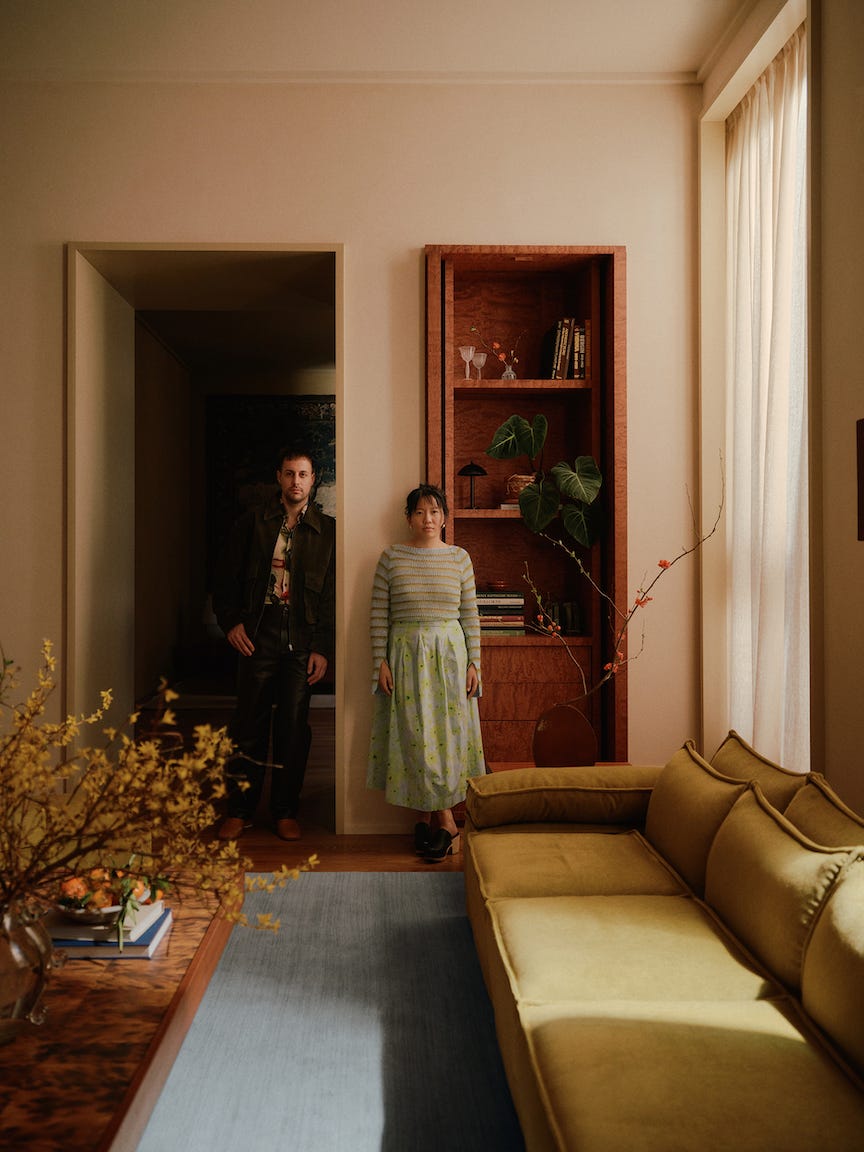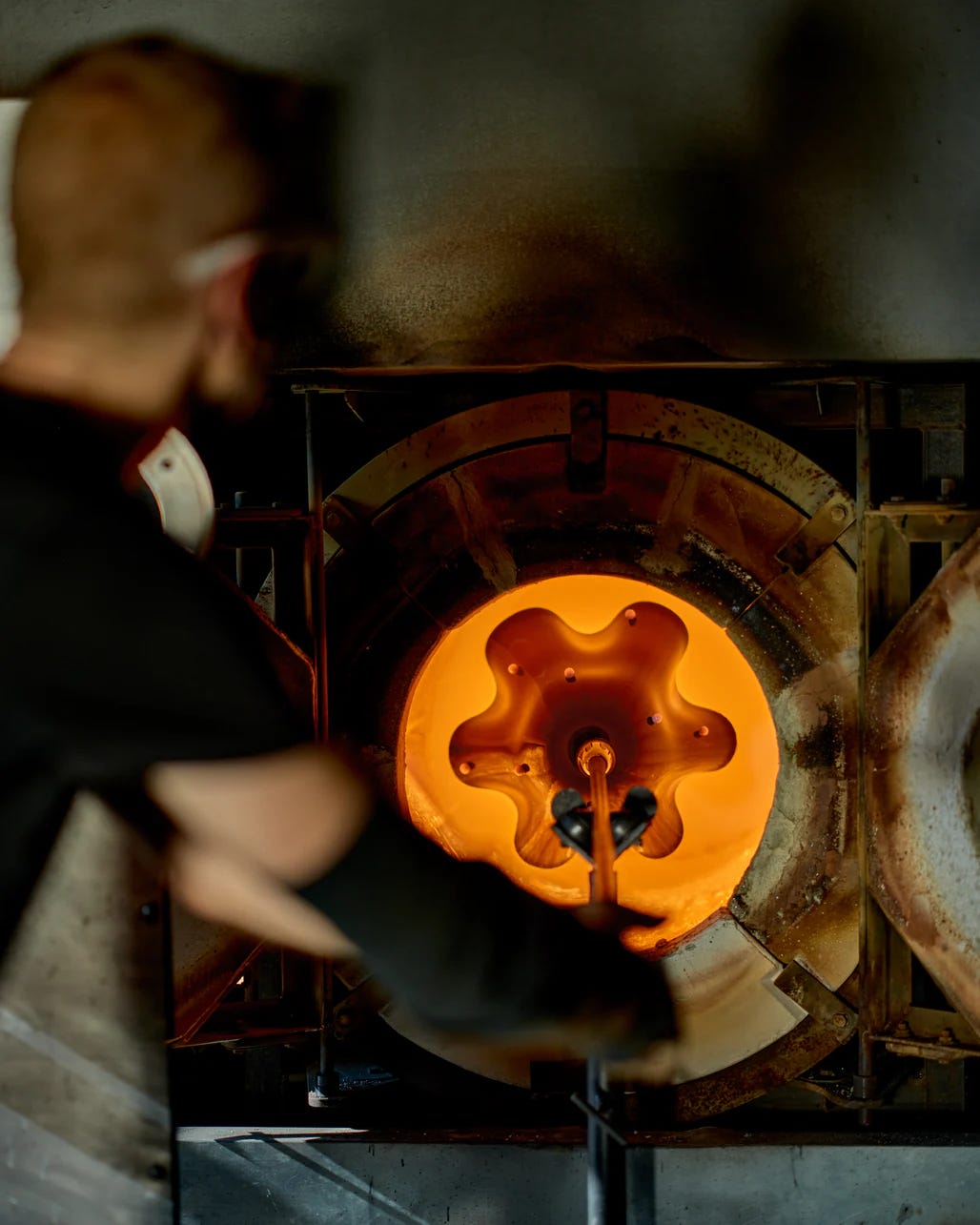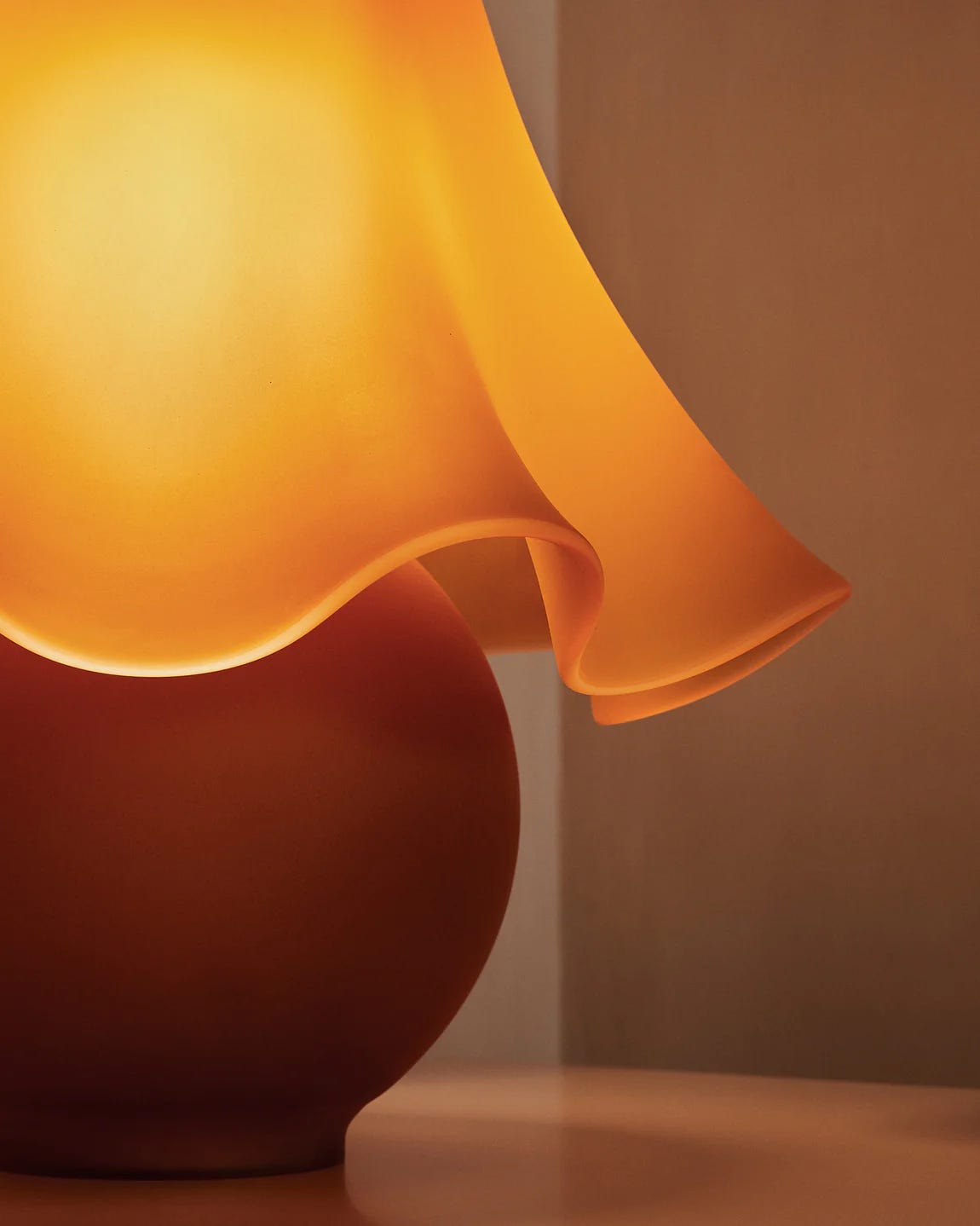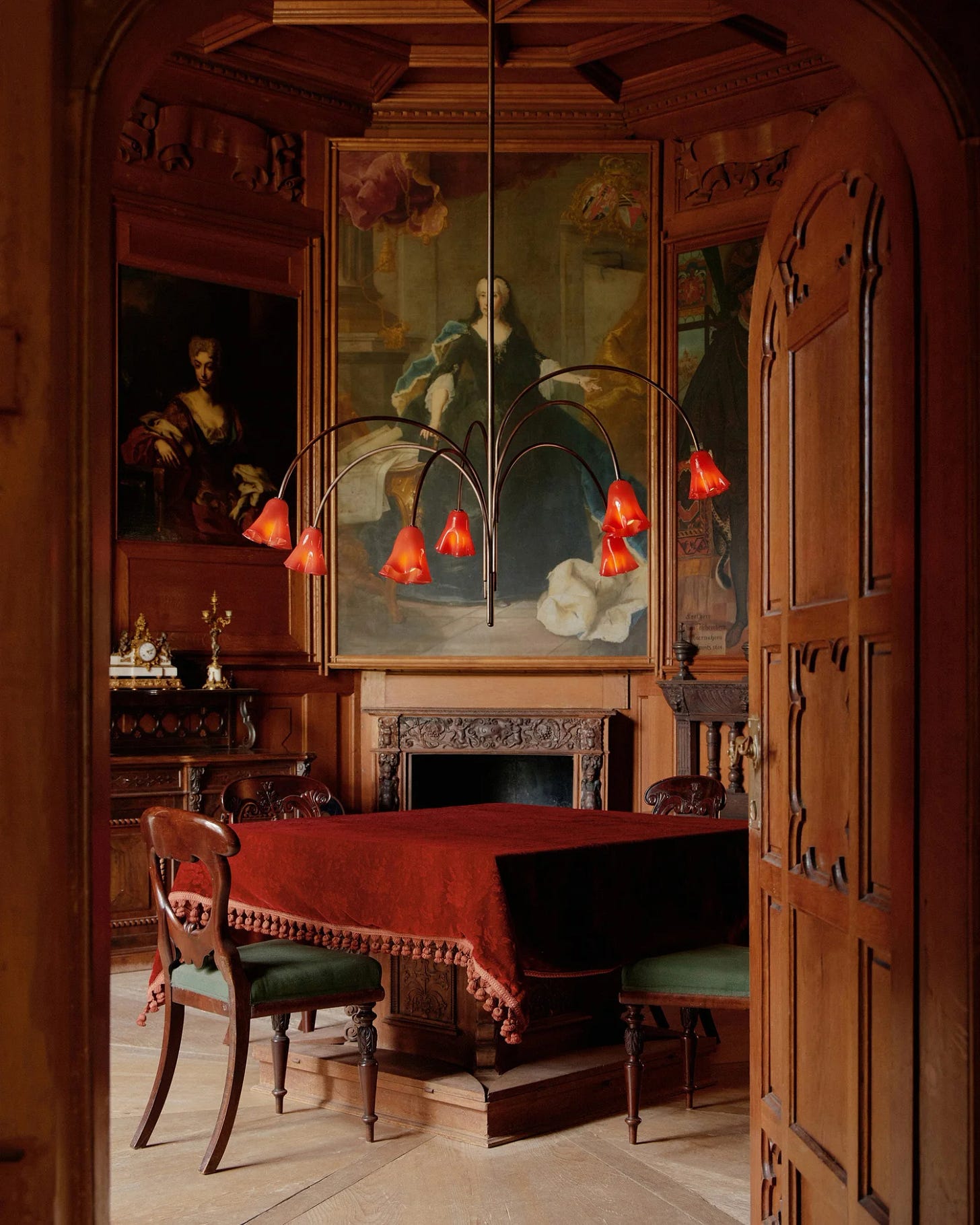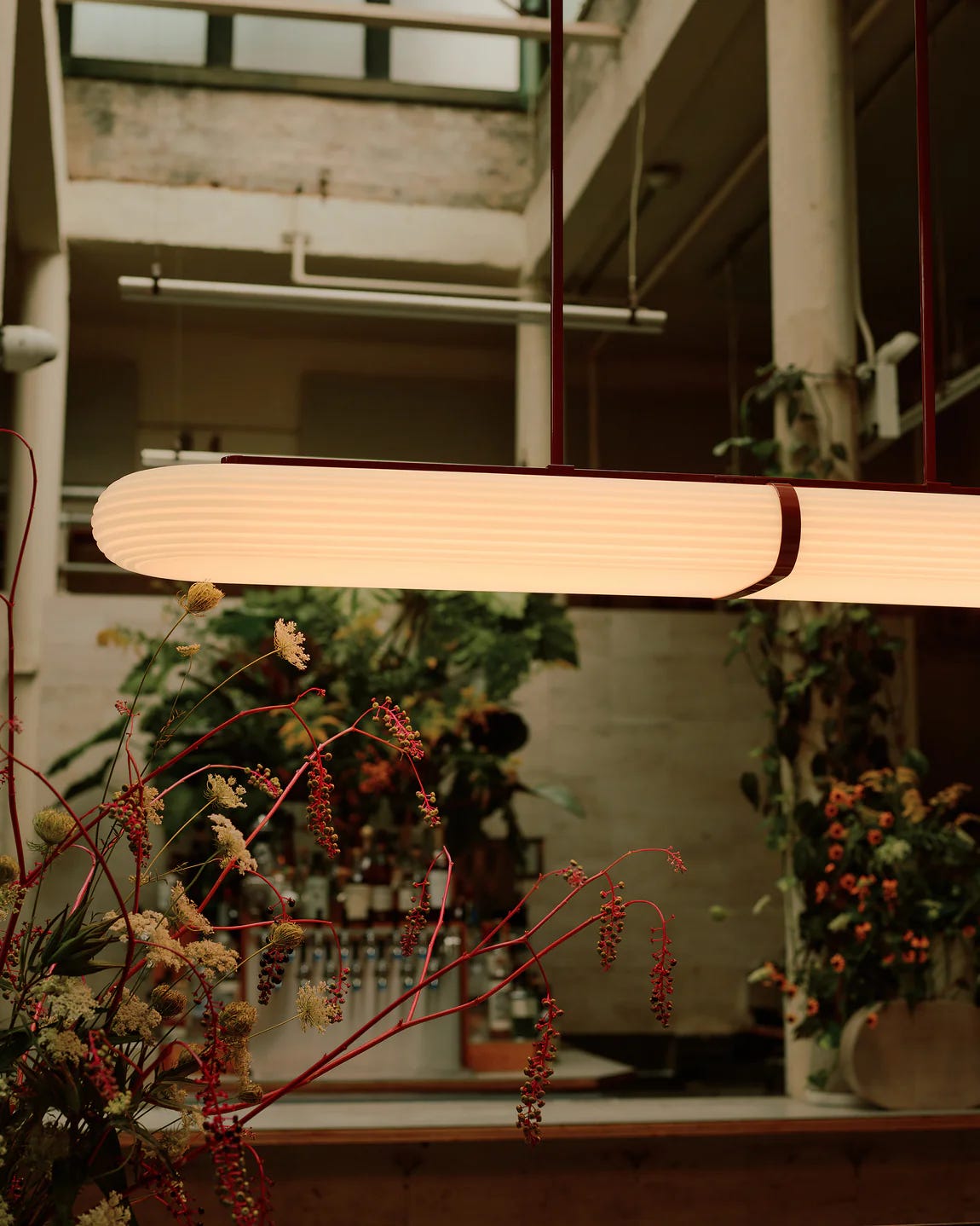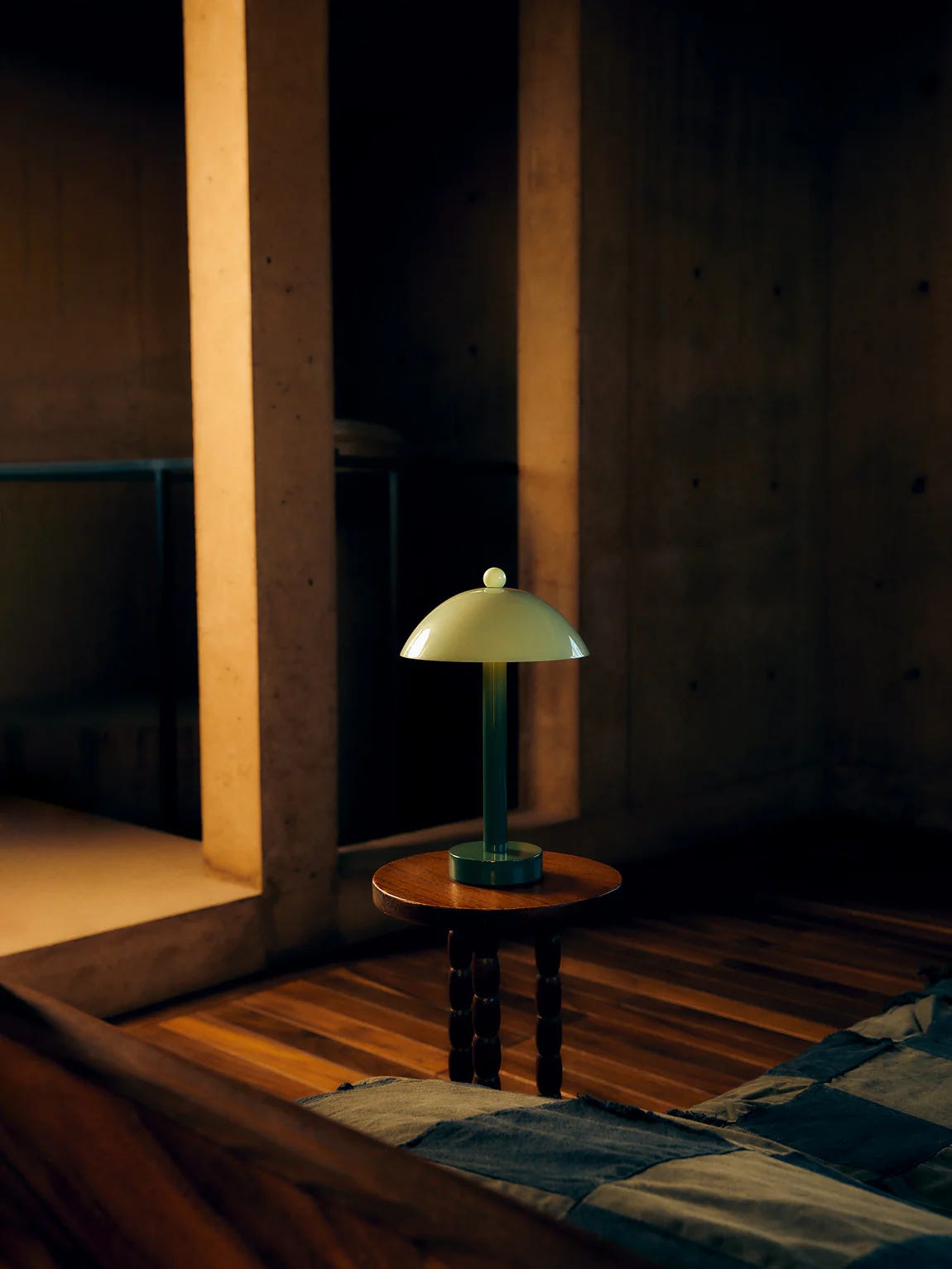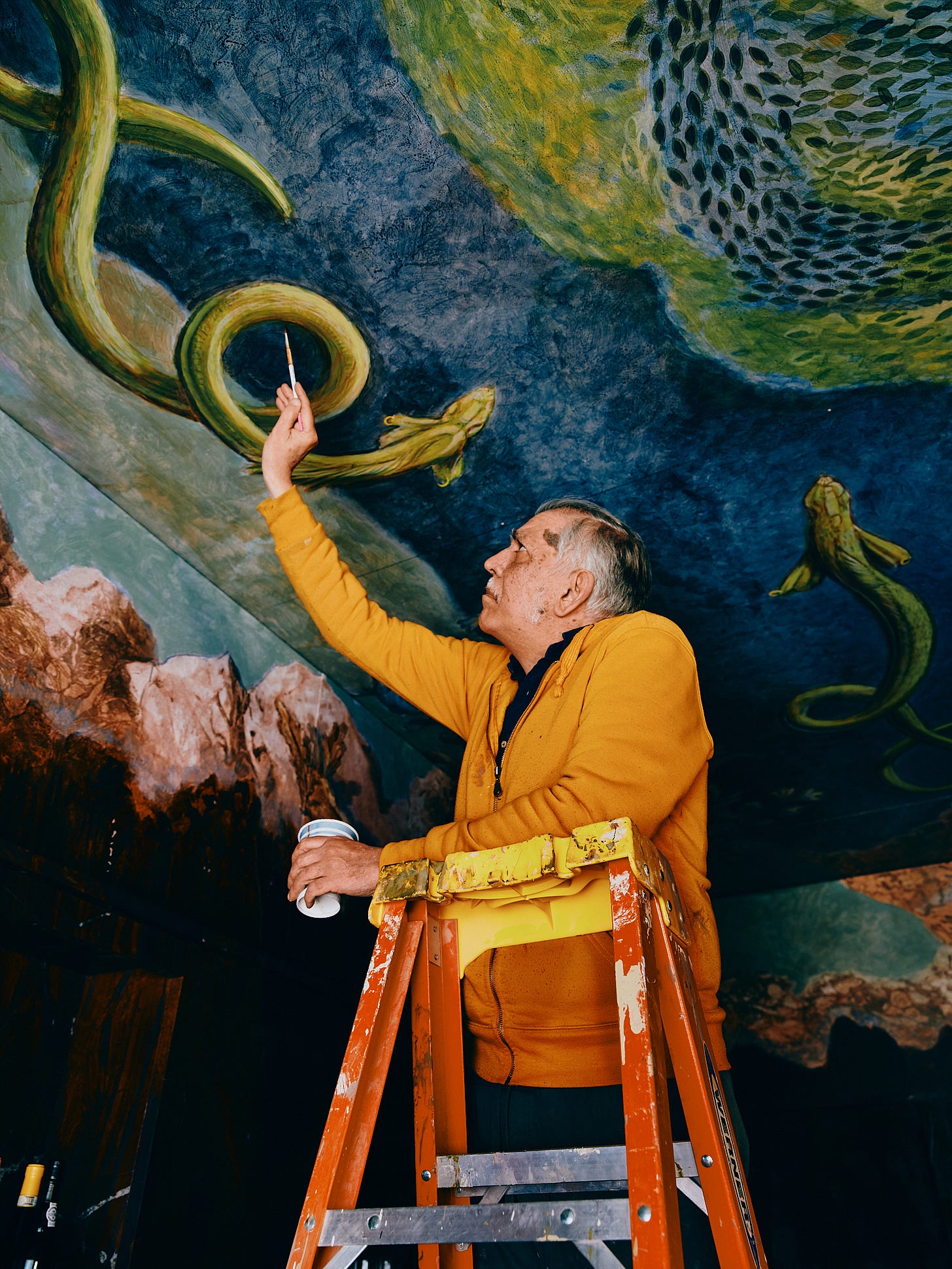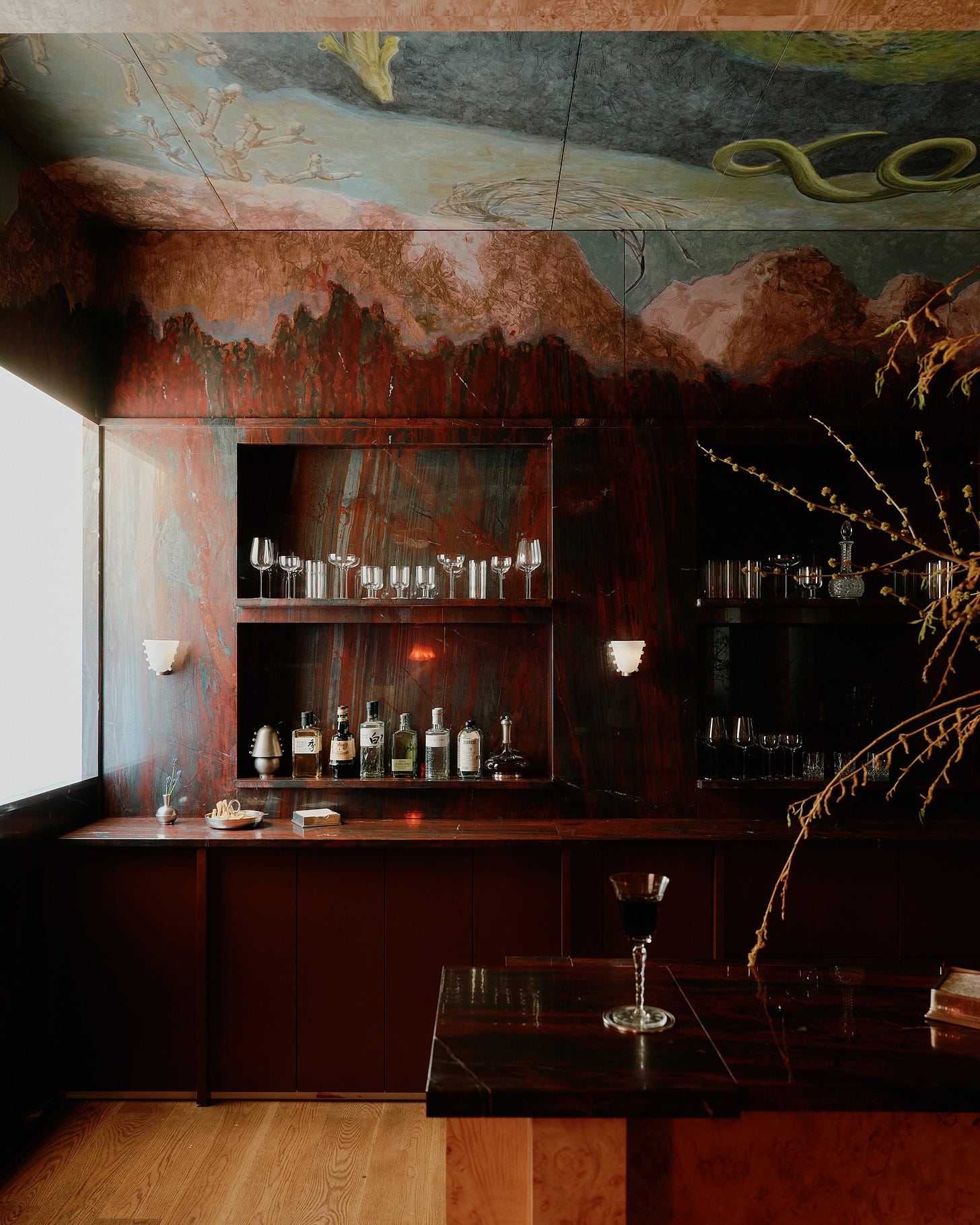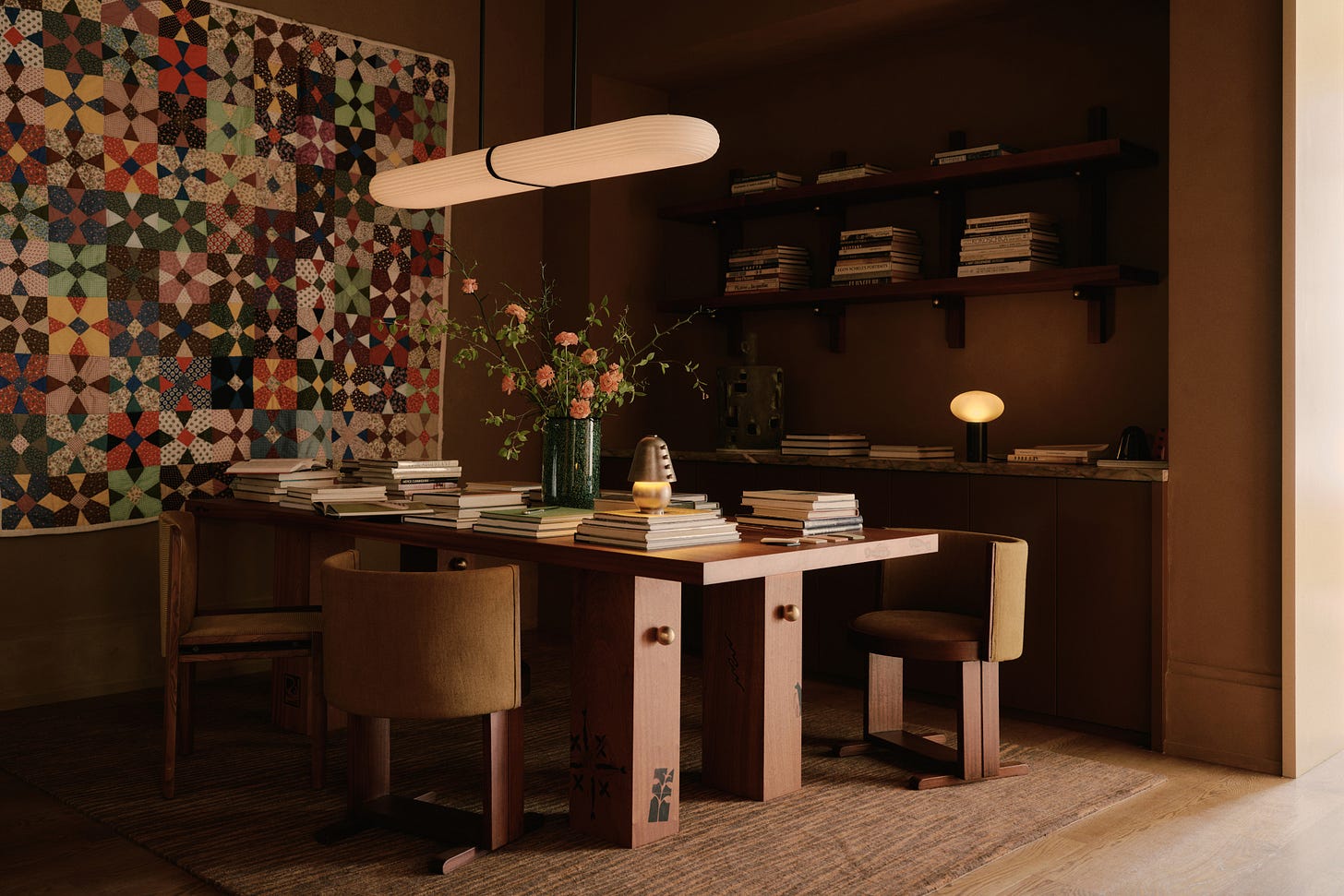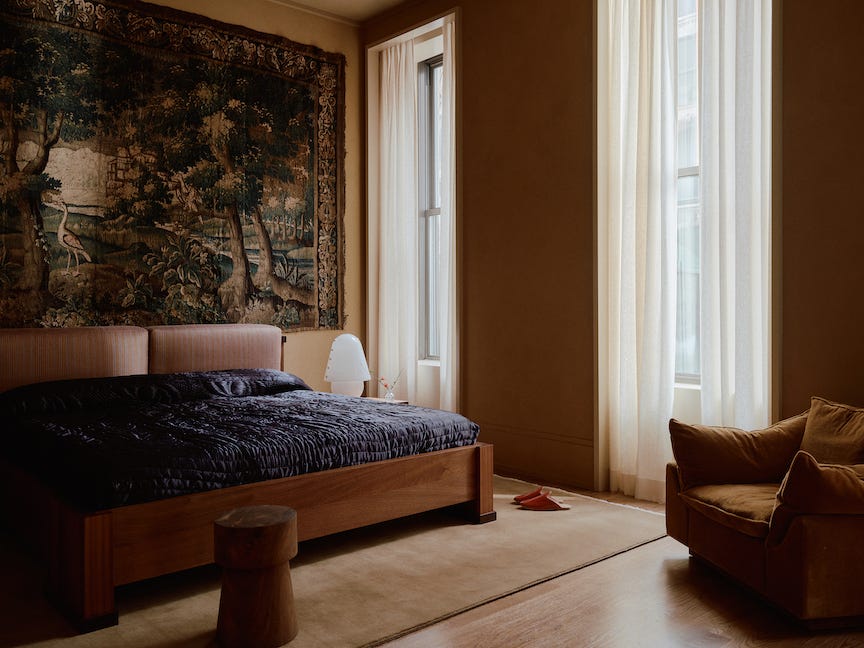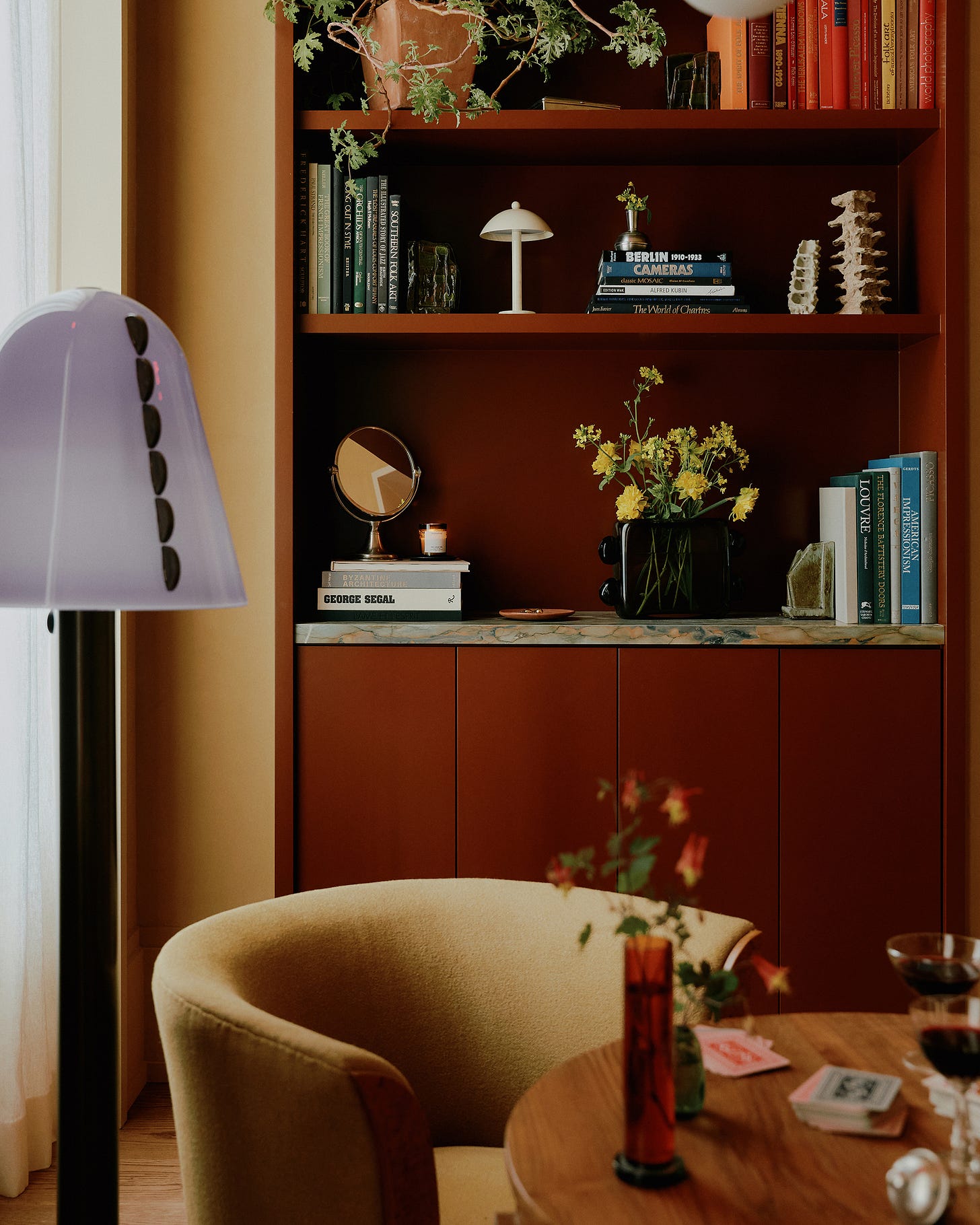Many months ago, I found myself in the neighborhood of a concept shop I had been wanting to visit. I was excited to have remembered that the store, Quarters, opened by Felicia Hung and Nick Ozemba founders of Brooklyn-based lighting studio In Common With, was just around the corner. I popped in with some expectations of what I’d find, but they were quickly exceeded upon entry.
Housed in an 8,000-square-foot historic 19th-century loft, the store is set up like a home with distinct living, dining, and bedroom spaces. It’s furnished exclusively with pieces designed or curated by Hung, Ozemba, and their peers—or, in many cases, a combination of multiple forces. In Common With lighting is thoughtfully arranged throughout and gives guests a real sense of how each table lamp, sconce, or chandelier could be styled and creatively positioned in their homes.
Besides lighting, guests can also find a thoughtful selection of vintage furniture, rare books, specialty pantry items, and unique pieces. The meticulously sourced and restored vintage furniture and decor are created in collaboration with well-known artists such as Sophie Lou Jacobsen, Danny Kaplan, Shane Gabier, Simone Bodmer-Turner, and Claudio Bonuglia.
Should you want to linger a bit in the space (which now always seems to be the case on my end), the Bar at Quarters serves as a place to rest and enjoy a glass of wine or a light bite — all while surrounded by beautifully appointed interiors.
I've since returned to Quarters multiple times, consistently impressed with how the decor is reimagined and neatly curated with the lighting collections. Every time I leave, I become more curious about the story of In Common With, how it came to be, and where the idea for Quarters came from. It was this curiosity that recently led me to connect with Hung and Ozemba — to learn more about their unique vision for the store and brand. Here’s what they had to share for my Substack audience.
To kick things off, let’s start at the very beginning. Can you share how In Common With got its start? And what is the story behind the name?
Felicia and I met in college, after graduation she went into product design, I went into interiors. Over time, we found ourselves drawn back to each other creatively, and we started designing some products informally. What began at my kitchen table grew into a deeper collaboration, and eventually into In Common With. From the beginning, it was about a shared vision—ours, and that of the broader community of artists, fabricators, and designers we admire. The name reflects that ethos: a belief that good things happen when we find what we have in common. — Nick Ozemba
Can you share more about your company's better-together philosophy and how that influences the outcome of your products?
Collaboration is at the heart of everything we do. It allows us to create work that’s more layered, more dimensional, and often more surprising than what we could make on our own. Our Curio series is an expression of that spirit—limited-edition pieces developed in dialogue with artists and studios we love. One example is our collaboration with Italian artist Claudio Bonuglia, who brought his incredible trompe-l'œil technique to a series of wooden furniture that Nick and I designed. More recently, we worked with Australian ceramics studio Szilvassy to reimagine our Ceramic Disc Surface Mount in clay. Each piece is a kind of conversation. — Felicia Hung
This same spirit inspired us to open Quarters, a space dedicated to celebrating craftsmanship in all its forms. Everything inside—from hand-thrown ceramics to pantry staples to vintage pieces—is rooted in a story of making. We source from family-run ateliers, work with heritage manufacturers, and reupholster vintage finds from across Europe. It’s not just a store; it’s a living, evolving platform where we host exhibitions, chef dinners, and events that bring different disciplines into conversation. — Nick Ozemba
Can you speak to your production process? How many hands are touching a product as it comes to life?
Each of our pieces passes through many hands—ours, our in-house design and engineering teams, our fabricators, and often collaborators or specialty craftspeople. We work with a network of artisans across the U.S. and abroad, many of whom we’ve partnered with for years. It’s an intentionally intimate and tactile process, with each person bringing their own expertise. That human touch is part of what gives our work its soul. — Felicia Hung
Your assortment of lighting is made up of six distinct collections. How does a collection typically take shape?
Every collection begins with a material or formal question: how can we push this further, reframe it, or bring something unexpected to it? From there, we explore forms, modular systems, and material pairings through sketching and prototyping. The process is iterative, and often collaborative—we’ll work closely with our fabricators or bring in outside artists to help evolve the idea. We think of each collection not just as a grouping of products, but as a design system with its own logic and vocabulary. — Felicia Hung
In Common With lighting is carried at your concept store Quarters. You also carry many other categories including decor, furniture, tabletop, etc.—how are these pieces selected?
Quarters is a physical expression of our world—an evolving home for the things we love, collect, and create. The contemporary pieces are often made by peers whose work we admire, and in some cases, by collaborators we've brought into our Curio program. Claudio Bonuglia, for example, not only hand-painted a series of our furniture pieces but also painted the mural above the Bar at Quarters. The vintage items are things we source together during travel, primarily in Europe, then restore and reupholster with care.
Our pantry offerings are personal too. You’ll find Taiwanese condiments that speak to Felicia's heritage, and Italian oils and vinegars that reflect mine. Across every category, we’re guided by a commitment to craft and storytelling—every object at Quarters has a reason to be there. — Nick Ozemba
I love how the rooms in Quarters are always shifting and changing—what drives the design decisions for those spaces?
We treat Quarters like a living space—it’s meant to evolve with us. We’re constantly reimagining the layout in response to new arrivals, collaborations, or seasonal shifts. Sometimes it’s a full transformation, sometimes a small moment—a new vignette, a different perspective. The goal is to keep the space immersive and ever-changing, so that even our most regular visitors discover something new. — Nick Ozemba
Do you have any words of wisdom for someone looking to get started in this industry?
This industry demands persistence, curiosity, and generosity. Surround yourself with people who challenge and inspire you. Don’t be afraid to ask questions, and don’t hold your ideas too closely—sharing them is often where the magic happens. For us, building In Common With has been about community as much as it has been about design. That’s what’s kept us grounded, and what continues to move us forward. — Nick Ozemba
Is there anything new that we should be keeping an eye out for—from In Common With or Quarters?
We’re gearing up to launch new product collections this year and are continuing to grow the Curio program with some exciting collaborators. At Quarters, we’re expanding to host more immersive events, from chef-led dinners to artist takeovers. The space is always changing, and we like it that way. — Felicia Hung
For more information on In Common With and Quarters you can visit their websites at www.incommonwith.com and www.shopquarters.com or follow them on Instagram at @incommonwith and @shopquarters. Quarters is located at 383 Broadway, Floor 2, New York, N.Y., and is open Tuesday through Saturday 11:00 A.M. – 6:00 P.M.
Xx Charlotte

